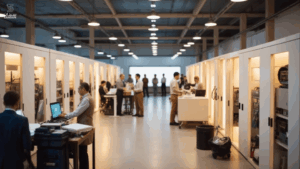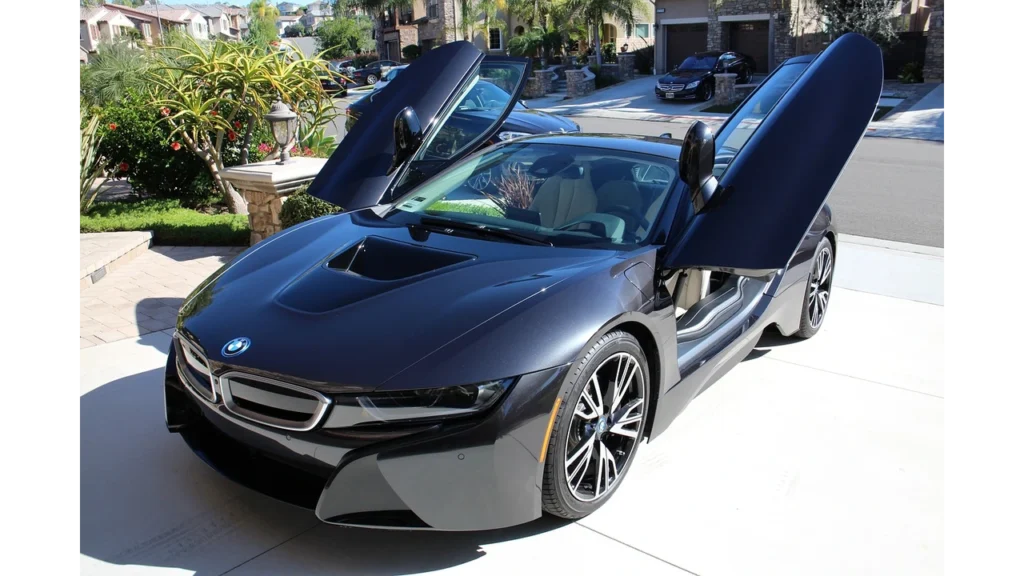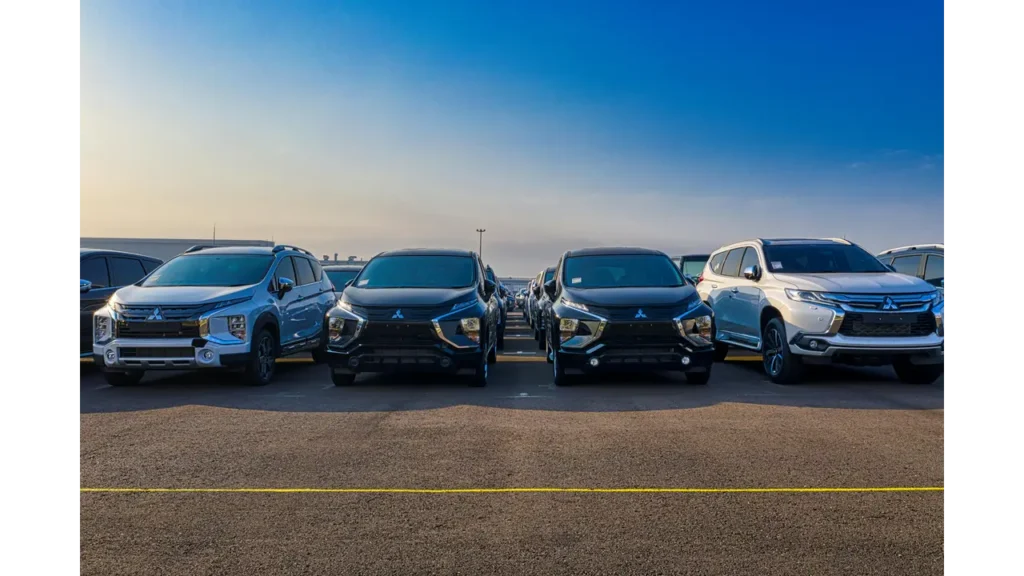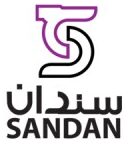Operating a workshop in Oman’s climate comes with unique challenges—blazing summers, prolonged cooling cycles, and rising electricity costs are just a few. For many industrial businesses, energy bills make up a significant portion of monthly operational expenses (OPEX). As energy prices increase and environmental regulations become more stringent, cutting down on power consumption has moved from being a “nice-to-have” to a necessity.
That’s where the concept of an energy-efficient workshop in Oman comes in. By adopting strategic upgrades—from insulation and HVAC optimization to solar power integration—workshop owners can reduce energy consumption, lower overhead, and extend equipment lifespan. These changes not only cut costs but also contribute to long-term sustainability, improved worker comfort, and regulatory compliance.
Oman’s Vision 2040 encourages industries to shift toward greener, more efficient infrastructure. Whether you’re planning to build a new facility or upgrade an existing one, making your workshop energy efficient is one of the most impactful investments you can make.
In this blog, we’ll explore practical, cost-effective upgrades that can reduce OPEX by 20% or more. From lighting to solar to machinery, here’s how to build and maintain an energy-efficient workshop in Oman without compromising performance.
Why Energy Efficiency Matters in Oman’s Climate?
In Oman’s demanding climate, energy efficiency isn’t optional—it’s strategic. An energy-efficient workshop in Oman not only withstands environmental stress but also thrives by delivering long-term cost savings and operational excellence.
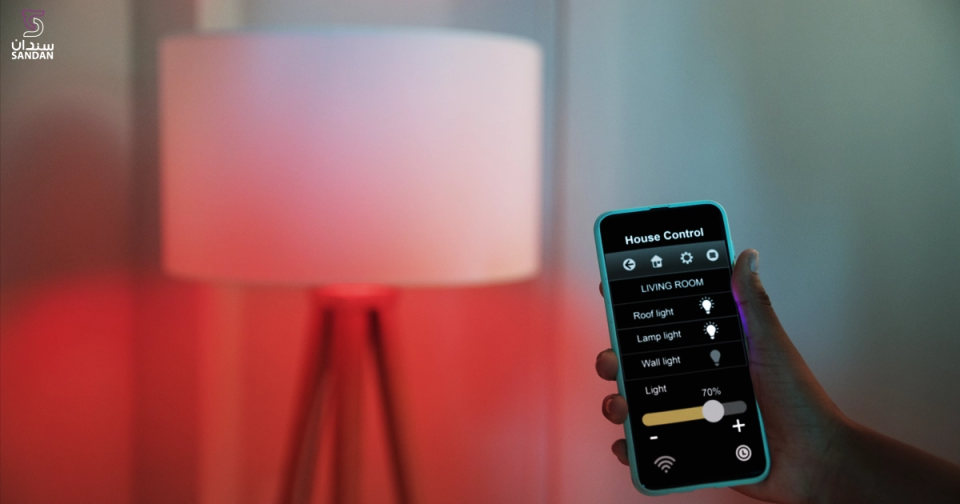
Extreme Heat Drives High Energy Consumption
Oman’s desert climate brings intense heat, especially during the long summer months when temperatures often exceed 45°C. For industrial workshops, this results in non-stop operation of air conditioning units, ventilation systems, and machinery—all of which are power-intensive. These conditions lead to soaring electricity bills, which can quickly eat into profits if not managed efficiently. Creating an energy efficient workshop Oman is a proactive solution to reduce excessive energy consumption while maintaining productivity.
SMEs Face Growing Operational Pressures
Small and medium-sized enterprises (SMEs), which form the backbone of Oman’s industrial landscape, often operate on tight margins. Rising energy costs directly affect their monthly OPEX and long-term sustainability. With fewer financial buffers, SMEs are under increasing pressure to find smarter, more cost-effective ways to run their operations. Energy efficiency offers a direct, measurable way to reduce overheads and reallocate savings into growth and innovation.
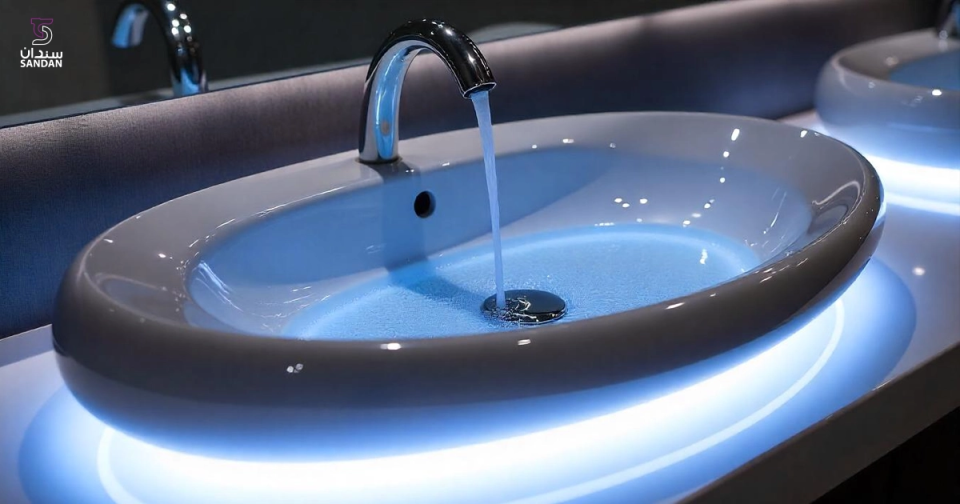
Environmental Mandates Are Becoming Stricter
In alignment with global climate goals and Oman Vision 2040, the Sultanate is gradually tightening its environmental standards. Workshops and industrial facilities are being encouraged to reduce their carbon footprint through better building practices, renewable energy integration, and responsible energy usage. Transitioning to an energy efficient workshop in Oman is not only financially wise but also aligns with these evolving environmental expectations, positioning businesses for regulatory compliance and future readiness.
A Strategic Advantage for Modern Industrial Spaces
Energy efficiency is more than a sustainability trend; it’s a competitive differentiator. Workshops that invest in energy-saving upgrades benefit from enhanced operational performance, better employee comfort, and reduced maintenance needs. This translates into higher efficiency, lower downtimes, and stronger brand value. Moreover, energy-efficient spaces can qualify for certain incentives or leasing benefits, especially in industrial zones like Sandan that support green infrastructure.
Insulation & Building Envelope Improvements
The building envelope—comprising the roof, walls, windows, and doors—acts as the first line of defense against Oman’s intense heat. For any energy-efficient workshop in Oman, optimizing this layer is essential to reduce the reliance on air conditioning and maintain a stable indoor environment.
#1 Roof and Wall Insulation for Desert Conditions
Oman’s climate demands materials that can withstand extreme heat while minimizing heat transfer. Polyurethane foam panels, mineral wool, and rock wool are highly effective for both roofs and walls. These materials trap less heat and maintain cooler internal temperatures. In metal-roofed workshops, applying rigid insulation boards or spray foam beneath the roof layer drastically cuts down radiant heat infiltration.
For wall insulation, sandwich panels with high thermal resistance (R-value) are ideal. They not only reduce energy use but also help in soundproofing and moisture control, both of which are crucial in dusty industrial zones.
#2 Reflective Roofing and Radiant Barriers
Installing reflective or cool roofing—coated with white membranes or specialized reflective paint—can deflect sunlight and significantly lower rooftop temperatures. Radiant barriers, when added beneath the roof sheathing, reflect radiant heat away from the building. Together, these solutions can lower indoor temperatures by several degrees, reducing the need for continuous air conditioning.
#3 Windows, Shutters, and Air Sealing
Outdated or improperly sealed windows allow hot air to seep in and cool air to escape. Upgrading to double-glazed windows with low-emissivity (Low-E) coatings prevents solar heat gain. For workshops with open bays or ventilation slots, sealing gaps with industrial-grade weather stripping or foam gaskets is a cost-effective step that pays off quickly.
Installing automated shutters or sunshades on west-facing windows also blocks the harshest afternoon sun, improving indoor comfort and reducing HVAC load.
Direct Impact on Cooling Demand
By strengthening insulation and sealing vulnerabilities, workshops can reduce indoor heat gain by up to 40%. This translates to significantly lower HVAC energy consumption, extended equipment life, and fewer maintenance issues. Any business looking to operate an energy-efficient workshop in Oman must prioritize these envelope upgrades as a foundational step.
HVAC Optimization and Smart Cooling Solutions
In Oman’s sweltering climate, HVAC systems are not just necessary—they’re lifelines for workshop operations. However, inefficient systems can become energy guzzlers, significantly inflating operational expenses. To maintain an energy-efficient workshop in Oman, businesses must focus on both smart HVAC design and ongoing performance optimization.
#1 Choosing the Right High-Efficiency HVAC Systems
Not all air conditioning units are built for industrial environments or extreme heat. Investing in high-efficiency HVAC systems with advanced inverter technology, high Seasonal Energy Efficiency Ratios (SEER), and variable-speed compressors ensures better cooling with reduced energy draw. For workshops with large floor areas or high ceilings, ducted systems or multi-split units with zoning capabilities are often more effective than standalone units.
Ensure the selected HVAC unit is rated for desert conditions and has corrosion-resistant components, especially in coastal or dusty areas common across Oman.
#2 Smart Thermostats and Zoned Cooling
One of the most impactful upgrades for an energy-efficient workshop in Oman is the use of smart thermostats. These devices monitor real-time occupancy and temperature patterns to adjust cooling intelligently. Zoning systems allow different areas of a workshop to be cooled independently, preventing overuse of HVAC in less active zones.
With IoT-based smart controls, businesses can set automated cooling schedules, receive maintenance alerts, and monitor energy usage—all from a centralized dashboard or even a mobile device.
#3 Evaporative Cooling: An Alternative for Dry Zones
In many parts of Oman where humidity is low, evaporative cooling can serve as a highly cost-effective alternative to traditional air conditioning. These systems use water evaporation to cool air and consume a fraction of the electricity. While not suitable for precision environments like electronics workshops, they work well in garages, repair bays, and storage areas.
For hybrid environments, combining evaporative coolers with targeted air conditioning helps achieve a balanced and efficient cooling strategy.
#4 Routine Maintenance for Peak Efficiency
Even the best systems can underperform without proper maintenance. Filters clogged with dust, refrigerant leaks, or faulty thermostats can all push up energy consumption. Regular cleaning, duct inspections, coolant top-ups, and system recalibrations can improve efficiency by 15–20%.
In the heat-intensive climate of Oman, skipping HVAC maintenance can also reduce equipment life significantly, leading to unplanned costs and downtime.
Smarter Cooling, Smarter Savings
Cooling is the largest contributor to energy bills in workshops. By upgrading HVAC systems, integrating smart controls, and considering alternative cooling methods, you can reduce energy consumption drastically, helping your energy-efficient workshop in Oman operate cost-effectively all year round.
Energy-Efficient Lighting Systems
Lighting may seem like a secondary concern in workshop operations, but inefficient lighting can quietly drain thousands of rials each year. For businesses aiming to run an energy-efficient workshop in Oman, upgrading the lighting system is one of the fastest and most cost-effective ways to reduce energy consumption.
#1 LED Lighting vs. Traditional Fixtures
Traditional lighting in workshops—such as halogen lamps, metal halide, or fluorescent tubes—consumes excessive electricity and generates unwanted heat, increasing cooling demand. LED fixtures, on the other hand, consume up to 70% less energy, last 3–5 times longer, and emit minimal heat.
In addition, LEDs offer better illumination with customizable color temperatures and minimal flicker, improving both efficiency and worker comfort.
#2 Smart Controls: Motion Sensors and Daylight Harvesting
Installing motion sensors in low-traffic zones such as storage rooms, corners of the workshop, or during night shifts ensures lights are only on when needed. Timers can be programmed to follow work schedules, reducing accidental overnight usage.
Daylight harvesting systems adjust artificial lighting based on the availability of natural sunlight. This is particularly useful in workshops with skylights or large windows, helping to balance lighting levels while saving energy.
#3 Optimizing Lighting Layout for Maximum Efficiency
An optimized lighting layout ensures that light is evenly distributed, eliminating dark spots and reducing the need for excessive fixtures. Reflective surfaces, task lighting for workbenches, and appropriate fixture height further reduce energy waste.
For an energy-efficient workshop in Oman, working with a lighting consultant can help design a layout tailored to your facility’s dimensions, activity zones, and natural light availability.
Cost Savings and ROI
While LED lighting systems and smart controls require an upfront investment, most workshops in Oman report a payback period of under 18 months due to energy savings alone. Reduced maintenance, fewer replacements, and extended fixture life add to the overall ROI.
Lighting may be just one part of the puzzle, but when done right, it significantly contributes to building a truly energy-efficient workshop in Oman that’s both cost-effective and environmentally responsible.
Solar Power Integration for Workshops
Oman’s abundant sunlight—averaging over 3,000 hours per year—makes it an ideal candidate for solar energy adoption. For businesses striving to build an energy-efficient workshop in Oman, rooftop solar is one of the most powerful upgrades to reduce long-term operational costs while embracing sustainable practices.
Rooftop Solar in Oman’s Climate: High Feasibility, High Returns
The Sultanate’s desert environment provides consistent solar irradiation throughout the year, making solar power not just viable, but highly efficient. Workshops with wide, flat rooftops can capitalize on this by installing photovoltaic (PV) panels that convert sunlight into clean electricity.
Solar panels perform optimally in Oman’s climate with minimal efficiency loss. Dust accumulation may require periodic cleaning, but maintenance needs are generally low, and return on investment is high due to continuous solar exposure.
Types of Solar Panels and Installation Options
When planning solar integration for an energy-efficient workshop in Oman, businesses can choose from several panel types. Monocrystalline panels offer high efficiency and compact installation—ideal for limited roof space. Polycrystalline panels are more budget-friendly and suitable for large-scale systems where space isn’t a constraint.
Workshops may opt for:
- On-grid (grid-tied) systems: These feed excess electricity back to the main grid, often resulting in credits or offset costs.
- Off-grid systems with battery storage: Ideal for remote workshops or those aiming for complete energy independence.
Mounting options include fixed tilt frames or adjustable mounts to optimize solar capture throughout the year.
Government Support and Industrial Incentives
Oman’s government has been actively encouraging solar energy adoption through regulatory simplification, net metering policies, and green energy incentives. In industrial parks like Sandan, businesses benefit from pre-approved solar-friendly infrastructure and smoother permit pathways.
Consulting with local solar providers or park authorities can help identify applicable incentives and optimize system design for both efficiency and regulatory compliance.
Solar ROI: Sustainable and Scalable
The upfront cost of solar installation has declined significantly in recent years. For most industrial workshops, ROI can be achieved within 4–6 years through savings on electricity bills alone. The longevity of solar systems—often 25 years or more—makes them a long-term asset with consistent returns.
In addition to reduced OPEX, solar systems enhance brand perception and regulatory alignment. For any forward-looking energy-efficient workshop in Oman, solar isn’t just a green choice—it’s a smart one.
Machinery and Equipment Efficiency
Energy-efficient infrastructure isn’t limited to cooling and lighting. The tools, machinery, and equipment used daily in a workshop contribute significantly to electricity consumption. For a truly energy-efficient workshop in Oman, optimizing equipment performance is essential to reducing operating costs and maximizing productivity.
#1 Choose Energy-Rated Tools and Equipment
Investing in equipment certified for energy efficiency—such as tools rated by international standards like IEC or Energy Star—ensures lower power consumption during operation. These tools are designed to deliver the same performance with less energy draw, making them ideal for high-usage environments like automotive workshops, fabrication centers, and light manufacturing units.
Energy-efficient motors, for example, consume up to 10% less electricity while offering greater durability and less maintenance.
#2 Upgrade Critical Systems: Motors, Compressors, Welding Units
Old or oversized motors, air compressors, and welding machines are often energy hogs. Upgrading to high-efficiency or variable frequency drive (VFD) motors can significantly reduce power wastage. Similarly, using rotary screw compressors with smart control panels helps regulate usage based on demand, avoiding unnecessary energy drain during idle periods.
For welding systems, inverter-based machines use far less energy than traditional transformer-based units and offer better precision and control.
#3 Implement Load Management and Conduct Energy Audits
Load management is a strategic approach to balancing energy usage across different timeframes. By scheduling high-power equipment during off-peak hours or staggering start-up sequences, you can prevent load spikes that inflate electricity bills.
Conducting regular energy audits allows businesses to identify inefficiencies and address them before they result in higher costs. Audits provide data on real-time equipment usage, helping managers make informed decisions about replacements, upgrades, or process changes.
#4 Automate to Reduce Standby Power Consumption
Idle equipment still consumes power. Integrating automation and smart controls ensures machines shut off when not in use or operate only when triggered by specific inputs. For example, sensors can switch off conveyors, hoists, or assembly lines during non-peak hours or break times.
Automation also improves overall workflow efficiency, reducing unnecessary cycles and manual errors that lead to waste.
Water and Waste Efficiency
While electricity is often the focus in energy-saving conversations, water use and waste management play equally vital roles in building a truly energy-efficient workshop in Oman. Efficient water usage reduces both utility bills and strain on local resources, while smart waste practices contribute to overall sustainability and energy recovery.
#1 Water Recycling and Greywater Use
Workshops that use significant water—such as in car washing, cooling systems, or cleaning processes—can benefit from greywater recycling systems. These systems collect and treat used water from sinks or equipment for non-potable reuse, like floor cleaning or irrigation. This reduces dependence on fresh water sources and ensures continuous operation even during supply restrictions.
#2 Smart Taps and Low-Flow Fixtures
Installing sensor-based taps and low-flow plumbing systems significantly cuts water wastage. These smart systems ensure water is only used when needed, eliminating leaks and unnecessary flow during idle times. Over a year, such upgrades can reduce water bills by 30% or more in busy workshop environments.
#3 Waste Heat Recovery Systems
Industrial workshops generate large amounts of heat, especially from welding machines, compressors, or air exhausts. Waste heat recovery units (WHRUs) capture this energy and repurpose it for secondary use, such as water heating or pre-warming air for ventilation. This reduces the need for additional power sources and contributes directly to lower OPEX.
#4 Boosting Sustainability through Integration
When combined, water-efficient systems and smart waste recovery not only reduce operating costs but also support environmental goals. They enhance the sustainability profile of the business, which is becoming increasingly important for regulatory approvals, public perception, and future-proofing investments.
ROI and Operational Savings
Upgrading to an energy-efficient workshop in Oman involves upfront investment, but the long-term return easily justifies the cost. From slashing monthly utility bills to minimizing downtime and maintenance expenses, the benefits add up quickly. Understanding the financial impact over a 3–5 year horizon helps businesses make confident, data-driven decisions.
Upfront Costs vs. Long-Term Savings
A typical energy efficiency upgrade—covering insulation, LED lighting, smart HVAC systems, and water-saving fixtures—can cost anywhere between OMR 8,000 to OMR 20,000, depending on the size and function of the workshop. Adding rooftop solar may add another OMR 10,000–15,000, depending on system capacity.
However, these upgrades often reduce electricity and water bills by 20–30% annually. For a medium-sized workshop with average utility bills of OMR 1,000/month, this translates to annual savings of up to OMR 3,600 or more. That means the payback period could be as short as 3–4 years.
Example: A Light Manufacturing Workshop in Muscat
A local fabrication workshop in Muscat recently retrofitted its 600 sqm facility with solar panels, reflective roofing, LED lighting, and smart thermostats. The total upgrade cost was OMR 18,000. Within 3 years, they reported a 27% drop in monthly utility costs and reduced HVAC maintenance calls by half. Their breakeven point came in year four, after which the upgrades began delivering pure profit.
Reduced Maintenance and Government Support
Energy-efficient systems, particularly LED lights and inverter-based HVAC units, have longer service lives. This translates into fewer replacements and lower maintenance costs. Additionally, Oman’s industrial policies—especially under Vision 2040—support green infrastructure with incentives like streamlined permits and potential rebates for solar integration in designated zones like Sandan.
Cost-Benefit at Every Level
While the capital investment may appear significant, the cumulative benefits in energy savings, reduced downtime, and enhanced operational efficiency outweigh the initial cost. A well-planned transformation into an energy-efficient workshop in Oman becomes not just sustainable, but financially rewarding in the medium to long term.
Sandan’s Role in Supporting Efficient Industrial Spaces
Sandan’s strategic location near Muscat Airport and major highway links reduces logistics costs, while its integrated service ecosystem—featuring banking, car care, restaurants, and retail—helps cut downtime and boost worker convenience. These factors directly contribute to lowering OPEX, making it easier for businesses to manage costs and grow sustainably.
In addition, its clean layout, reliable power supply, and flexibility in leasing make it ideal for both startups and established enterprises aiming to build or retrofit an energy-efficient workshop in Oman.
#1 Purpose-Built Infrastructure for Energy-Conscious Businesses
Sandan Industrial Park is uniquely positioned to support the development of modern, sustainable workshops. Designed with Oman’s climate and industrial vision in mind, the park provides pre-zoned plots, reliable utilities, and essential infrastructure tailored for energy-conscious tenants. Whether you’re leasing a warehouse or constructing from the ground up, Sandan offers the foundation needed for building a truly energy-efficient workshop in Oman.
#2 Seamless Support for Permits and Upgrades
One of Sandan’s key advantages is its built-in administrative and regulatory support system. Businesses benefit from assistance with municipal and environmental approvals, fast-tracked permit processing, and clear zoning guidelines. For those interested in renewable energy, Sandan facilitates solar panel installations with infrastructure-ready rooftops and connections, simplifying both compliance and implementation.
Workshops in Sandan also receive expert guidance on efficient HVAC setup, water conservation systems, and insulation improvements, ensuring long-term operational savings from day one.
#3 Built for Long-Term Efficiency
By choosing Sandan, businesses aren’t just selecting a location—they’re investing in a long-term strategy that aligns with Oman Vision 2040. The park’s focus on sustainability, infrastructure readiness, and regulatory ease makes it the perfect launchpad for workshops that want to be cost-efficient and future-ready.
FAQs
What makes a workshop energy efficient in Oman’s climate?
An energy-efficient workshop in Oman uses optimized insulation, energy-saving HVAC systems, LED lighting, solar power, and smart water management. These upgrades reduce operational costs and help manage extreme temperatures without excessive energy use.
How much can I save by upgrading to an energy-efficient workshop in Oman?
Depending on the scale of upgrades, workshops in Oman can reduce energy and utility expenses by 20–30%. This includes savings from lighting, cooling, and equipment upgrades, with a typical return on investment seen in 3 to 5 years.
Is solar power a good option for workshops in Oman?
Yes, Oman’s abundant sunlight makes rooftop solar highly effective. Solar integration in an energy-efficient workshop in Oman helps cut electricity bills significantly and may qualify for government-backed incentives or net metering.
Do industrial parks like Sandan support energy-efficient workshop development?
Absolutely. Sandan Industrial Park offers infrastructure-ready plots, streamlined permit assistance, and support for solar and HVAC integration, making it an ideal location for building an energy-efficient workshop in Oman.
Are there any government incentives for energy efficiency in Oman?
While Oman does not have broad subsidies, industrial zones like Sandan often streamline approvals and support green initiatives in line with Oman Vision 2040. Businesses can benefit from reduced OPEX, faster compliance, and future regulatory alignment.
Conclusion
In Oman’s harsh climate, energy efficiency is no longer optional—it’s a necessity for long-term profitability and sustainability. From insulation and lighting to HVAC upgrades, solar integration, and efficient machinery, every improvement adds measurable value to your business. A well-designed energy-efficient workshop in Oman not only reduces electricity and water bills but also minimizes maintenance, improves worker comfort, and aligns your business with the Sultanate’s vision for sustainable industrial development.
Industrial parks like Sandan make it even easier by offering infrastructure-ready spaces, permitting assistance, and smart energy solutions tailored for local businesses and foreign investors alike. Whether you’re building new or retrofitting an existing facility, energy efficiency transforms your workshop into a leaner, more future-ready operation.
The initial investment pays off faster than you might expect, with long-term savings, increased productivity, and a positive environmental impact.
Ready to lower your OPEX and future-proof your business? Explore your options at Sandan and start building your energy-efficient workshop in Oman today.


